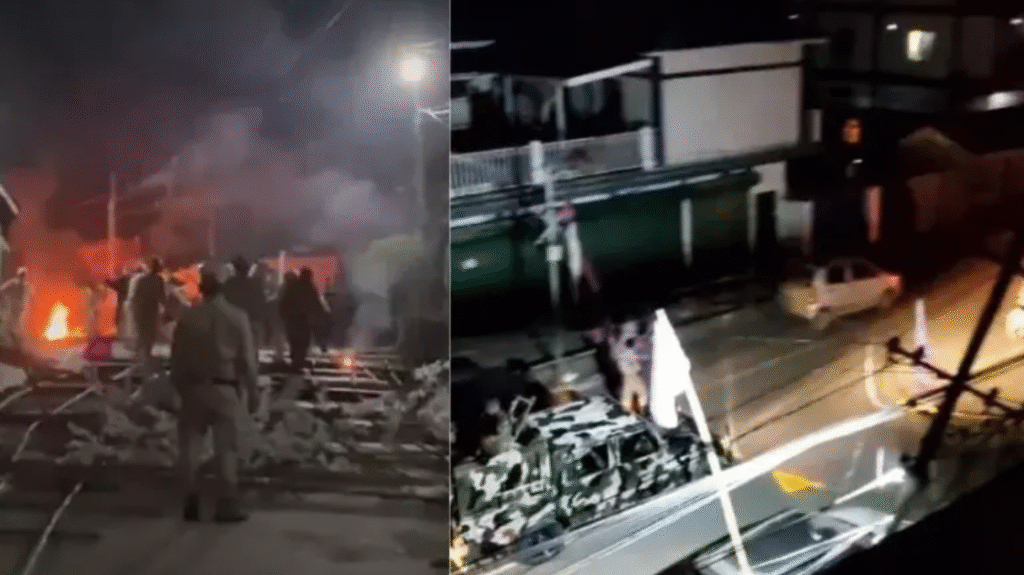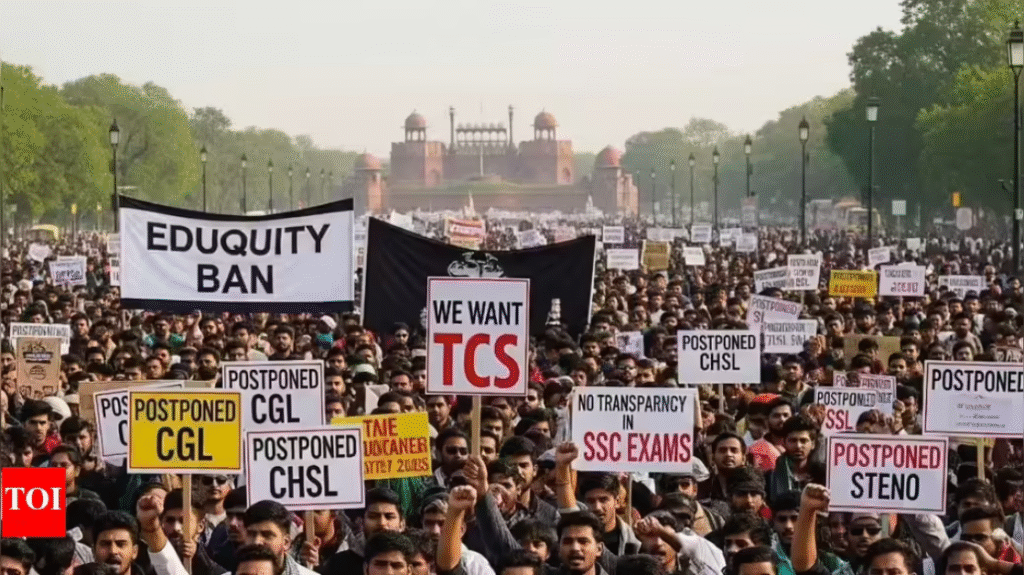In Manipur’s Churachandpur district, a seemingly small act of vandalism has sparked fresh unrest, raising legal questions, public anger, and state responsibility. On the night of September 11, 2025, banners and cutouts of Prime Minister Narendra Modi, put up in preparation for his visit, were damaged in the Pearsonmun and Phailien Bazaar localities. Two youths remain in custody, accused of the vandalism. Protests have followed, with clashes between demonstrators and security forces as tensions over law, order, and civil rights intensify.
Background & What Led Up to the Incident
Manipur has been struggling with ethnic tensions since May 2023, particularly between the Meitei people in the Imphal valley and tribes such as the Kuki-Zo in the hills. Modi’s visit on September 13, 2025, was intended as a gesture of reconciliation and peace. As part of the welcome preparations, local authorities arranged banners and cutouts in several parts of Churachandpur. On September 11, these displays were vandalised. Authorities responded by detaining several individuals; though many were released after questioning, two youths were held in custody.
Protests, Clashes & Public Reaction
- On September 14, hundreds of locals—mostly youth—gathered at Churachandpur Police Station demanding the release of the two detained youths.
- The protests turned violent as stones were thrown at security forces, and the police used crowd-control methods.
- Demonstrators chanted slogans, “Release our two friends,” expressing distrust and anger over what is perceived as targeting and insensitivity.
These events followed the mood of unrest in the state: displacement, ethnic violence, and past grievances still unresolved. Modi’s speech in Churachandpur emphasized peace and development, but the vandalism and the protests quickly shifted the narrative.
Legal Issues & Rights at Stake
Vandalism & Criminal Law
The alleged vandalism of public property (banners, cutouts) falls under criminal statutes. Relevant laws include sections of the Indian Penal Code (IPC) covering mischief (damage to property), criminal trespass (if any), and possibly public disturbance. The arrests of those directly involved are within police mandate if suspicion is founded.
Arrests, Detention & Due Process
- Law enforcement claims the two youths were detained from the site of vandalism—not arbitrarily.
- All other youths detained for questioning were released—raising questions over proportionality, timelines, and whether arrests were supported by sufficient grounds.
- Courts may assess whether due process was followed: whether warrants, identification, and legal rights (such as the right to counsel) were respected.
Freedom of Expression, Assembly & Law & Order
- Protesters have exercised their right to assemble and protest. These rights are constitutionally protected under Articles 19(1)(a) (free speech) and 19(1)(b) (assembly). Yet, they also must comply with reasonable restrictions under law, especially when protests risk public safety or escalate into violence.
- The state’s response (detentions, crowd control) must be balanced: too much force can violate rights; too little can allow lawlessness.
Judicial / Legal Responses
- As of now, the two detained youths are in custody. Reports say that after some protests, they may be released on bail, or legal processes for release are underway.
- Whether any FIR (First Information Report) has been filed, or under what charges, will be crucial to legal proceedings. This will determine whether the accused are tried under minor offenses or something more serious.
Criticism & Political / Social Perspectives
- Many locals argue that the reaction by police is heavy-handed, especially when it is unclear whether the youth had malicious intent or whether there was a provocation.
- Political parties and groups critical of the government have raised the issue of selective enforcement, asking whether authorities respond differently in similar cases depending on political optics.
- Others defend the state’s duty to protect public property and maintain law, especially given the heightened sensitivities in Manipur.
What the Law Says: Precedents & Constitutional Boundaries
- Indian law has precedents where courts have emphasized that property crimes must be properly distinguished from expressive acts; judicial oversight often intervenes when arrests are made without sufficient evidence.
- The judiciary has in past cases reaffirmed citizens’ rights to peaceful protest, subject to restrictions, and has called out police for overreach when force is used disproportionately.
Conclusion
The Churachandpur incident is more than just vandalism; it’s a flashpoint that reveals lingering ethnic tensions, public distrust, and the fragile balance between law enforcement and civil liberties. The legal system must ensure that arrests are used responsibly, protests handled fairly, and justice both served and seen to be served. As Manipur attempts peace through development and political gestures, ensuring transparency and legal accountability will play a vital role in rebuilding trust.
FAQs
Q: Were the two youths randomly detained or based on suspicion?
A: According to police, the two youths were detained after being identified from the site of vandalism, not randomly.
Q: Is vandalism punishable under Indian law?
A: Yes. Vandalism causing damage to public or private property is punishable under sections like IPC 425 (Mischief), 427 (Mischief causing damage of property), and possibly sections related to public order.
Q: Can protesters demand immediate release of arrested individuals?
A: Legally, protesters can demand, but release is subject to court orders, bail, and due legal procedure. Immediate release depends on showing lack of evidence or cooperative behavior with investigations.
Q: Is there a larger context in Manipur politics influencing this incident?
A: Yes. The state has been in prolonged ethnic tension since 2023 between Kuki-Zo and Meitei communities. Government development projects and visits by political leaders like PM Modi often come under scrutiny for perceived bias or insensitivity.
To read more Indian Laws and news, visit Legal Guide India



